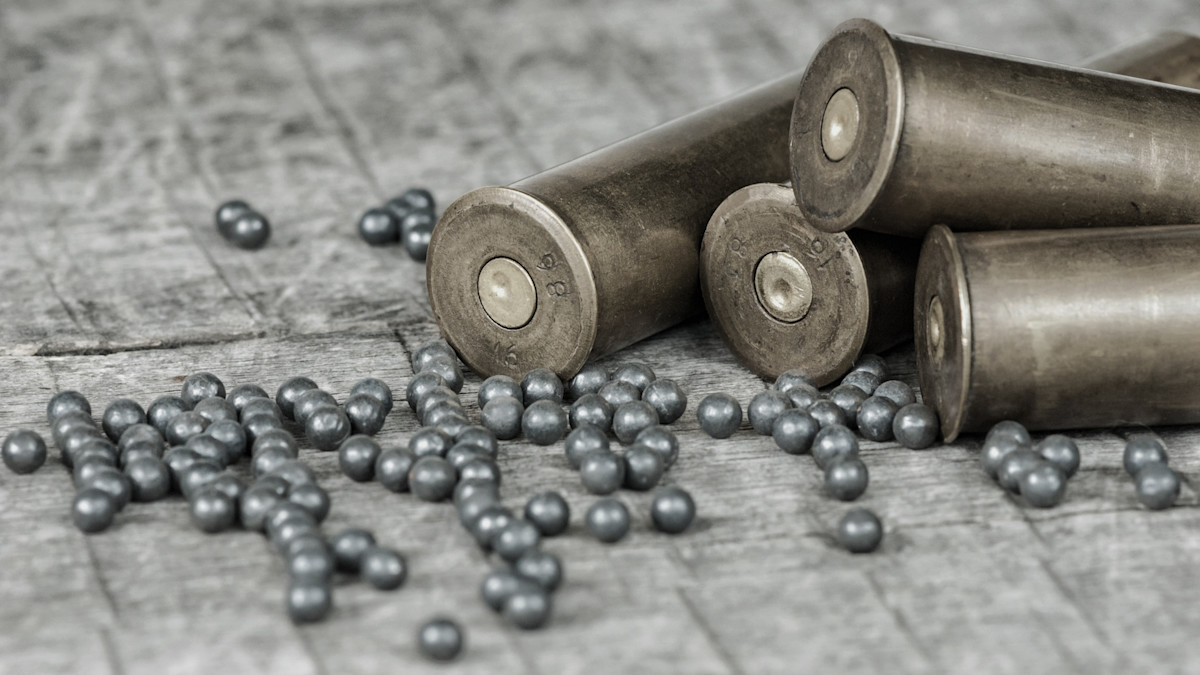
I’m not afraid to say it. The shot size system makes zero sense. Sure, you can remember that #7.5 is good for doves and BB is good for waterfowl. But do you know why 10 is smaller than 1? Or why the system changes from numbers to letters as the pellets increase in size?
Rifle calibers are simple: they describe the diameter of the bullet. Pistol calibers are the same, and while shotgun gauge sizes are less intuitive, they have a clear historical provenance. But the origin of the shot size naming system remains a mystery, and no one seems to know how to explain it.
Historical Inconsistency
Part of the problem is that for a long time, shot sizes were not standardized across manufacturers. Different manufacturers used the same numbers, but those numbers didn’t always indicate the same amount of shot.
For example, this 1792 handbook, “The British Sportsman, Or, Nobleman, Gentleman, and Farmer's Dictionary,” indicates that shot sizes are determined by the number of pellets that constitute one ounce.
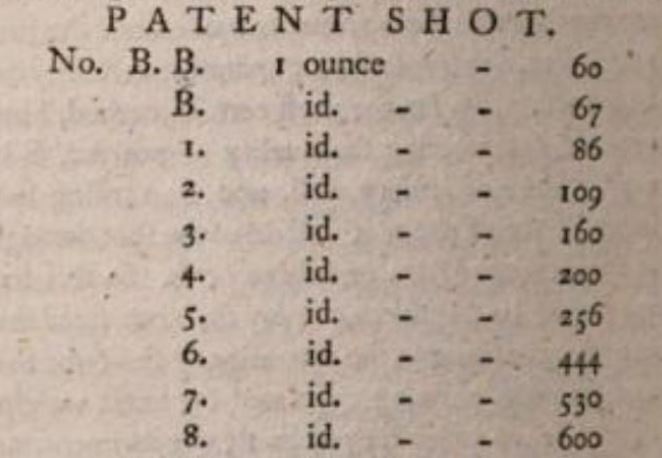
Eight is the smallest while “B.B.” is the largest in this system, and those two sizes require 600 and 60 pellets, respectively, to equal one ounce.
However, just a few decades later, in 1830, Peter Hawker published a now-famous handbook for sportsmen that includes a slightly modified and expanded version of that earlier table.
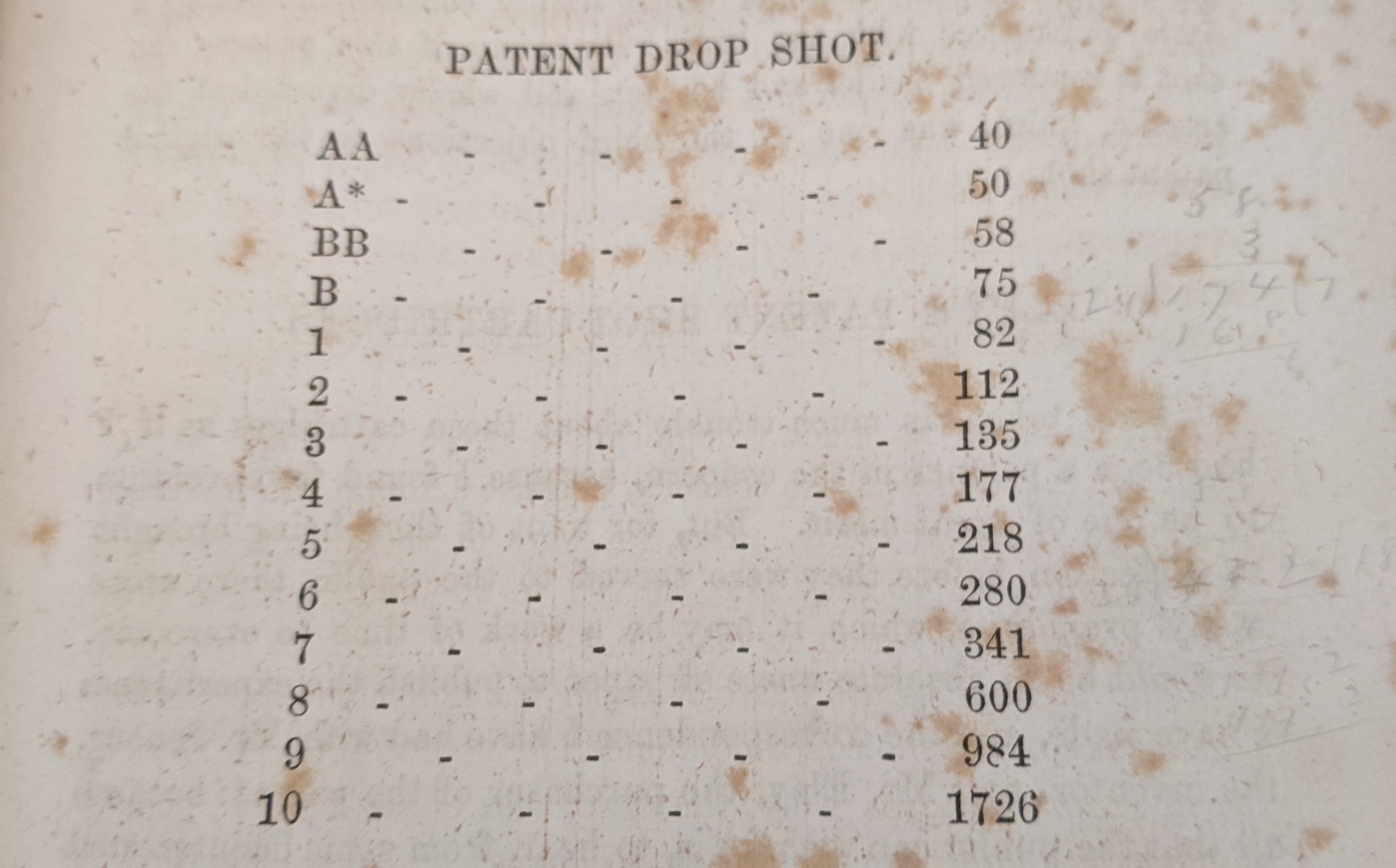
As you can see, the pellet numbers are slightly different from the earlier table for each size, with significant deviations in sizes 6, 7, and 8. This chart also adds two new sizes to either end of the spectrum.
Hawker doesn’t explain why the system goes from numbers to letters, but he does point out that manufacturers are partly to blame for this confusion.
“The shot of different manufacturers varies much in size,” he says. “For example, an ounce of No. 7, from Messrs. Walker and Maltby, amounts to 341 pellets; and the same weight, from Mr. Beaumont (late Preston), 398 ditto, &c.: and, in some places, the numbers are reversed.”
Later in the century, a dictionary of machinery notes that manufacturers from Baltimore and New York use different labeling systems that add even more categories to Hawker’s.
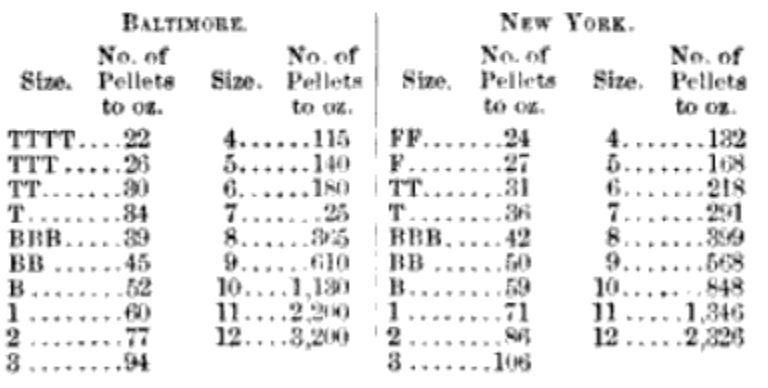
Over the next century or so, US manufacturers continued to standardize the number of pellets in each category until they came up with what we use today.
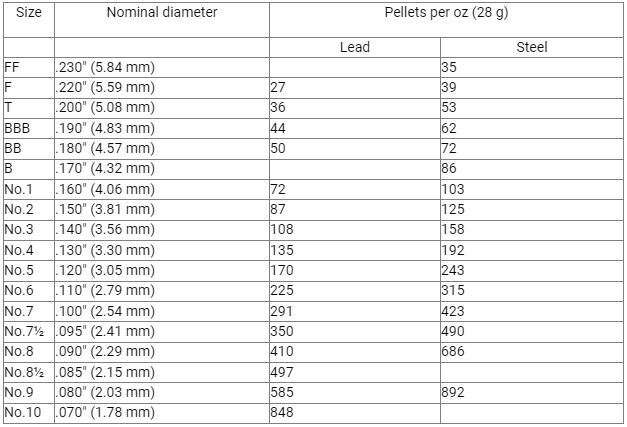
This helps, but it doesn’t explain everything. We know roughly how many pellets per ounce for each size, and we know those sizes have stayed the same for the last 150 years. But we still don’t know why the system uses smaller numbers for larger sizes or why those numbers and letters correspond to certain sizes of shot. (We also haven’t even touched on buckshot, but my editor says no one wants to read 2,000 words on this topic, so we’ll move along.)
A Theory
The Internet offers surprisingly little helpful information. The best source I found wasn’t a gun magazine or outdoor journal, but the English Language and Usage Stack Exchange. This thread dives into the topic, and the authors include links to each of their citations (some of which you’ll recognize from above).
One of those authors posits that the numbering system originates from the way shot used to be manufactured. To sort different sizes of pellets, ammo makers would run the pellets through a series of screens or sieves. The first sieve would contain the largest holes and so would have been labeled #1. The second largest would have been labeled #2, the third #3, and so on; and those numbers were then associated with the pellets they produced. (In another version of this theory, shot manufacturers would drip molten lead through sieves to create the different sizes.)

That system works as long as you never make any larger shot sizes. But once hunters started asking for larger shot, the manufacturers either had to rename everything (and confuse everyone) or come up with a different name for shot larger than #1. This is where the letters come from, though it’s still unclear why they chose the specific letters they did. (Sometimes they were acronyms for game birds, but other times they don’t appear to have any specific meaning.)
This theory made sense to me, and it has some historical backing. But I try not to rely on Internet forums for reliable information, so I reached out to every shotgun and shotshell expert I could find. We’re talking a who’s who of experts and historians: MeatEater contributor Joe Genzel, shotshell and shotgun researcher and expert witness Tom Roster, and Field & Stream shotgun field editor Phil Bourjaily.
In short, none of them knew. Roster called the shot size designation system “crazy” and likened it to the fly fishing tippet system, but didn’t offer any historical explanation for where shot sizes come from. I ran the screen/sieve theory past Bourjaily, and he told me it makes sense and he likes it, but he doesn’t know for sure. Roster said it “could be true,” but also said it could be an “urban legend.”
Last Shot
Considering the number of books, magazines, and websites dedicated to shotguns and wing shooting, it’s almost unbelievable that no one knows where we get our crazy, nonsensical system for naming shot sizes. If you know, or think you know someone who does, shoot me a message below in the comments. This is a mystery we should solve, if not for the Good of Humanity, at least for my own sanity.




Conversation